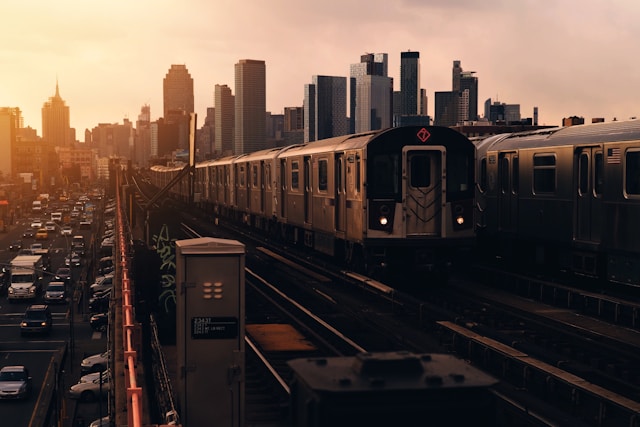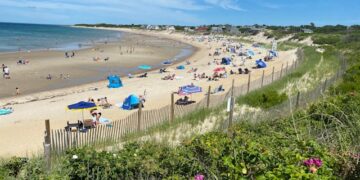Traveling from New York City to Boston by train is one of the most comfortable, scenic, and convenient ways to move between two of the East Coast’s busiest cities. Whether you’re commuting for business, planning a weekend getaway, or exploring New England, trains offer a stress-free alternative to flights or long drives.
But as of 2025, several new updates, pricing trends, and service improvements have made this route more efficient than ever. In this guide, we’ll break down everything you need to know from ticket types and schedules to onboard experience, cost comparisons, and expert tips for saving money.
Overview: Why Take a Train from New York to Boston?
The NYC–Boston corridor is one of the most heavily traveled routes in the U.S. with over 2 million passengers annually. Thanks to ongoing investments in Amtrak’s Northeast Corridor (NEC), trains between these cities now rival air travel in speed, comfort, and sustainability.
Here’s why more travelers in 2025 are choosing trains over planes or cars:
-
Time-efficient: Downtown-to-downtown travel (no airport transfers or security lines).
-
Comfortable: Spacious seats, Wi-Fi, food service, and scenic views.
-
Eco-friendly: Amtrak reports a 45% lower carbon footprint than flying.
-
Reliable: Fewer delays compared to flights, especially in bad weather.
Train Options from New York to Boston (2025)
There are two main Amtrak services operating between New York Penn Station (NYP) and Boston South Station (BOS):
Train Service |
Average Duration |
Price Range (One-way) |
Frequency |
Best For |
|---|---|---|---|---|
Acela (High-Speed) |
3h 35m – 3h 55m |
$120 – $300 |
~16 trains/day |
Business travelers, premium comfort |
Northeast Regional |
4h 10m – 4h 40m |
$30 – $120 |
~18 trains/day |
Budget-conscious travelers, flexible trips |
Both trains follow the same Northeast Corridor route, but differ in speed, stops, and onboard experience.
Acela vs. Northeast Regional: Key Differences Explained
1. Speed and Schedule
Acela is Amtrak’s flagship high-speed train, with fewer stops and upgraded tracks that allow up to 150 mph in certain sections. It saves roughly 40–60 minutes over the Northeast Regional, making it ideal for day trips or business travel.
2. Onboard Comfort
-
Acela: Leather seats, larger legroom, quieter cars, and first-class meal service.
-
Northeast Regional: Standard Amtrak seating, café car, free Wi-Fi, power outlets.
Acela offers Business and First Class only, while the Regional provides Coach and Business options.
3. Pricing and Value
-
Acela typically costs 50–100% more, but prices can drop during off-peak hours or sales.
-
Northeast Regional tickets are more flexible and often eligible for Amtrak Saver Fares (book early for up to 40% off).
Train Schedule and Frequency (2025 Update)
As of 2025, Amtrak operates 34+ daily trains between NYC and Boston, starting as early as 5:00 AM and running until around 10:00 PM.
Typical Departure Times:
-
Morning rush: 5:00 AM – 9:00 AM
-
Midday departures: 10:00 AM – 2:00 PM
-
Evening trains: 3:00 PM – 8:00 PM
Duration:
-
Acela: 3h 35m – 3h 55m
-
Northeast Regional: 4h 10m – 4h 40m
Train Ticket Prices: How Much Does It Cost in 2025?
Amtrak uses dynamic pricing, similar to airlines. Fares vary based on demand, time, and how early you book.
Fare Type |
Average Price (One-Way) |
Booking Window |
|---|---|---|
Saver Fare (Regional only) |
$30 – $60 |
14+ days in advance |
Value Fare |
$60 – $90 |
Flexible change options |
Business Class |
$100 – $150 |
Extra space, quiet car access |
Acela Business |
$120 – $220 |
High-speed comfort |
Acela First Class |
$200 – $300 |
Complimentary meals & drinks |
Money-saving tip:
Amtrak offers student, senior, and military discounts, and joining Amtrak Guest Rewards can earn you free trips faster than flying.
Route Highlights: What You’ll See Along the Way
The journey from New York to Boston isn’t just about getting there, it’s a visual tour of the Northeast. The route passes through several iconic cities and scenic spots:
-
New Haven, CT – Home to Yale University’s historic campus.
-
Providence, RI – A charming city with riverside views and colonial architecture.
-
Mystic, CT – Famous for its harbor and maritime museum (visible near the tracks).
-
Rhode Island Coastline – Offers brief but stunning ocean views before Boston.
Train vs. Plane: Which Is Better in 2025?
Factor |
Train (Amtrak) |
Plane (NYC–BOS) |
|---|---|---|
Total Travel Time |
4–4.5 hrs (no security or airport transfer) |
3.5–5 hrs (door-to-door) |
Price Range |
$30–$300 |
$100–$400 (with baggage fees) |
Comfort |
Spacious seats, no TSA hassle |
Tighter seats, security checks |
Environmental Impact |
45% less CO₂ per trip |
Higher emissions |
Reliability |
Rarely canceled |
Weather delays common |
Verdict:
Unless you’re connecting internationally, trains in 2025 are faster overall door-to-door, especially when factoring in airport transfers and security times.
Onboard Amenities & Travel Experience
Both Acela and Northeast Regional trains offer:
-
Free Wi-Fi (improved as of 2025 with stable streaming capability)
-
Power outlets at every seat
-
Quiet car option for uninterrupted work or rest
-
Cafe car with sandwiches, snacks, and coffee
-
Restrooms in every car
Acela adds:
-
Table service in First Class
-
Complimentary beverages
-
Reserved seating
Where to Depart and Arrive
-
Departure: New York Penn Station (NYP) centrally located in Midtown Manhattan (near Madison Square Garden).
-
Arrival: Boston South Station (BOS) close to Downtown Boston, the Seaport District, and public transit (Red Line, buses).
Intermediate stops include:
Newark, New Haven, Providence, Kingston, and Route 128 (suburban Boston).
Expert Tips for First-Time Travelers
-
Book Early: Amtrak’s Saver Fares can sell out 3–4 weeks in advance.
-
Use the Amtrak App: Manage tickets, seat selections, and live train updates easily.
-
Arrive 30 Minutes Early: Penn Station can be crowded, especially during rush hours.
-
Avoid Peak Fridays: Prices and crowd levels are highest between 3–6 PM.
-
Upgrade at the Station: If First Class has open seats, you can often upgrade last-minute for less.
Future of Train Travel Between New York and Boston
Amtrak’s Northeast Corridor Improvement Program (2024–2030) aims to reduce travel times by 30 minutes and modernize tracks for consistent high-speed operation. By 2027, Acela II trains are expected to reach 160 mph, with improved seating and sustainability features making this route even more competitive with air travel.
Quick Summary Table
Category |
Acela |
Northeast Regional |
|---|---|---|
Duration |
3h 35m – 3h 55m |
4h 10m – 4h 40m |
One-Way Fare |
$120–$300 |
$30–$120 |
Classes |
Business, First |
Coach, Business |
Wi-Fi |
Yes |
Yes |
Meals |
Complimentary (1st Class) |
Café car |
Stops |
Limited |
Multiple |
Ideal For |
Business & premium travel |
Budget & leisure trips |
Final Thoughts
Traveling by train from New York to Boston in 2025 offers the perfect mix of speed, convenience, and comfort. With frequent departures, scenic views, and eco-friendly benefits, Amtrak’s routes continue to outperform both flights and driving in overall experience.
Whether you’re after a luxurious ride on Acela or a relaxed, affordable journey on the Northeast Regional, trains remain the smartest way to connect two of America’s most historic cities.









